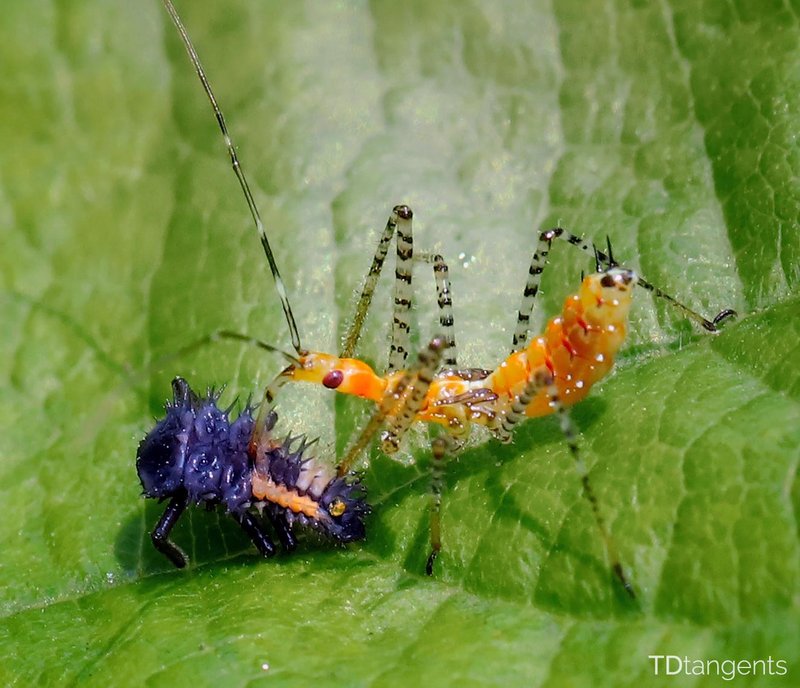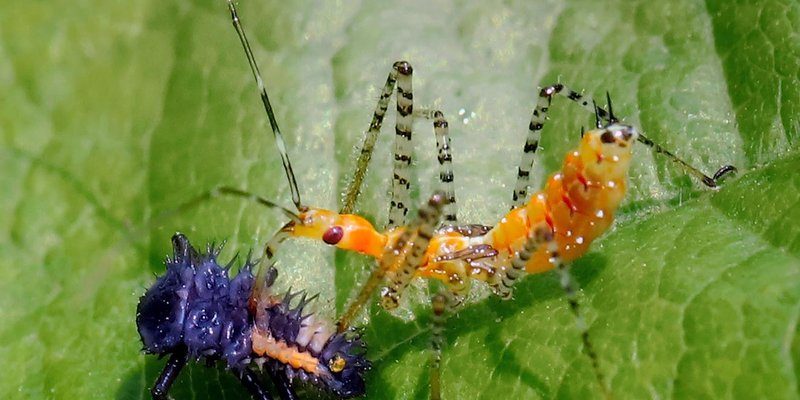
Imagine sitting in a garden on a sunny day, watching these tiny beetles flit from leaf to leaf. You might think they lead a carefree life, but in reality, ladybugs are constantly on guard, navigating a world filled with dangers. Understanding the threats they face not only makes us appreciate these vibrant insects more but also sheds light on the intricate web of life in our backyards. Let’s dive into the various predators and threats that ladybugs encounter, and why these challenges matter to our ecosystem.
Common Predators of Ladybugs
Ladybugs might be small, but they have a few main predators that find them quite appetizing. These predators include birds, spiders, and even other insects. It’s a little like a food chain in action, where every creature has its place.
- Birds: Many birds consider ladybugs a tasty treat. Species like sparrows, blue jays, and finches are known to swoop down and snag them off the leaves. Their bright colors might be eye-catching to us, but they can also signal to birds that ladybugs are a source of food.
- Spiders: You might not think of spiders as predators of ladybugs, but some crafty species lie in wait to catch them in their webs. Once a ladybug gets caught, it’s a quick end to its journey.
- Other Insects: Some larger beetles and even ants can pose a threat. For instance, certain species of beetles will prey on ladybug larvae, making it tough for the next generation to thrive.
Here’s the thing: ladybugs have developed some defenses, like their ability to secrete a foul-tasting chemical when threatened, which can deter predators. But with so many hungry creatures around, it’s always a challenge to stay safe.
Environmental Threats to Ladybugs
Beyond predators, ladybugs also face environmental threats that can impact their populations. Changes in their habitat or climate can create a ripple effect that leaves them vulnerable.
- Pesticides: Many homeowners and farmers use pesticides to keep pests in check, but these chemicals can be harmful to ladybugs. Pesticides don’t discriminate; they often eliminate beneficial insects along with the bad ones. This makes it tough for ladybugs, especially when they eat aphids and other pests that are also affected by these sprays.
- Habitat Loss: Urban development and agricultural expansion can strip ladybugs of their natural habitats. Without flowers and plants to hide in or feed from, their populations can dwindle. It’s like losing your favorite coffee shop in your neighborhood—suddenly, you have to search for alternatives.
- Climate Change: As temperatures rise and weather patterns shift, ladybugs may struggle to find suitable environments. They thrive in moderate conditions, so extreme heat or cold can disrupt their life cycles.
These environmental pressures combine to create a challenging world for ladybugs, making it essential to consider how we can help protect their habitats.
Competition for Resources
Ladybugs aren’t just battling predators and environmental challenges; they also face competition for food and resources. When resources are scarce, it becomes a struggle for survival.
- Pests: While ladybugs are known for eating pests like aphids, if those pests are over-reduced by pesticides, ladybugs may find it hard to locate food. It’s a bit of a double-edged sword.
- Other Ladybugs: Yes, even other ladybugs can be a threat! During lean times, competing for food sources can lead to aggressive behavior among ladybugs as they try to claim their share.
- Naturally Occurring Environmental Changes: Seasonal changes can impact food availability too. A harsh winter may lead to fewer aphids in spring, making it hard for ladybugs to find enough to eat.
This competition can lead to a decline in ladybug populations, which ultimately affects their role in pest control within ecosystems.
Impact of Invasive Species
Invasive species can wreak havoc on local ecosystems, and ladybugs are not exempt from this. In some cases, invasive ladybug species, like the Asian lady beetle, can outcompete native ladybugs for food and habitat.
When these invasive species move in, they often do so with no natural predators, which allows their populations to balloon. They can outcompete the native ladybug for resources, leaving the original residents struggling.
Human Interactions and Their Effects
Our interaction with nature can significantly impact ladybugs. From gardening practices to how we manage our landscapes, everything we do can affect these tiny beetles.
- Garden Practices: Creating a pesticide-free garden can help protect ladybugs. Planting flowers that attract ladybugs and their food sources can boost local populations. Think of it as setting up a buffet just for them!
- Awareness: Educating ourselves and others about the importance of ladybugs and the threats they face can lead to better practices. Awareness leads to action!
- Conservation Efforts: Some organizations focus on preserving ladybug habitats and ensuring they have the resources they need to thrive. Supporting such initiatives can make a significant difference.
When we choose to make our gardens and ecosystems friendlier to ladybugs, we’re contributing to their health and survival.
Why Ladybugs Matter
So, why should we care about all these threats to ladybugs? They might seem small and insignificant, but these little insects play a huge role in our ecosystems. Ladybugs help control pest populations, especially in gardens and farms. Fewer ladybugs mean more aphids and other pests, which can lead to a lot of problems for farmers and gardeners alike.
Additionally, studying ladybugs can give us insight into the health of our environment. When ladybug populations decline, it can indicate wider ecological issues that need attention.
In short, ladybugs may be tiny, but their impact is mighty. Protecting them helps maintain the balance in our gardens and natural spaces.
Despite their small size and charming appearance, ladybugs face numerous predators and threats that challenge their survival. From hungry birds and spiders to environmental changes and invasive species, these beetles must navigate a complex world filled with dangers.
But there’s hope. By understanding how we can create a safe environment for these beneficial insects, we can help them thrive. Next time you see a ladybug, take a moment to appreciate not just its beauty, but also the struggles it faces. With a little awareness and action, we can all contribute to a healthier ecosystem for ladybugs and many other insects that keep our world buzzing.

